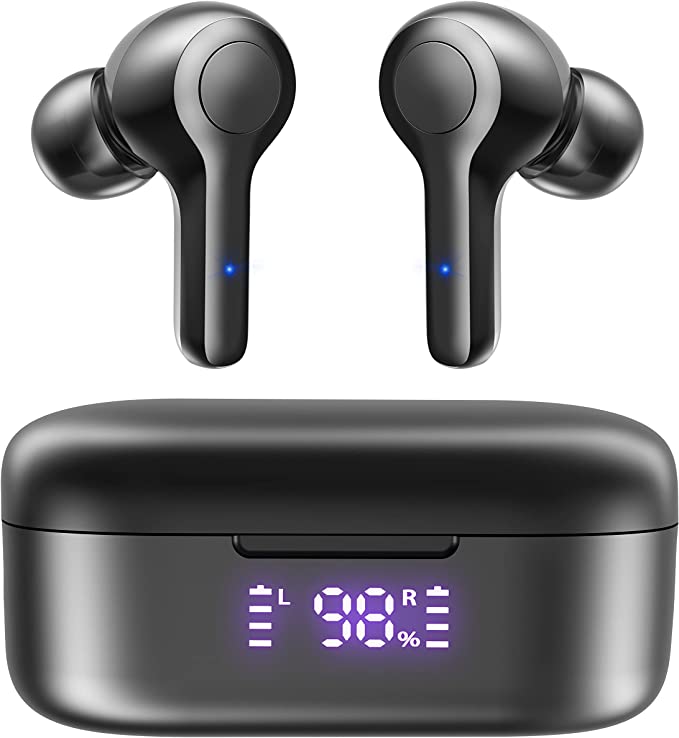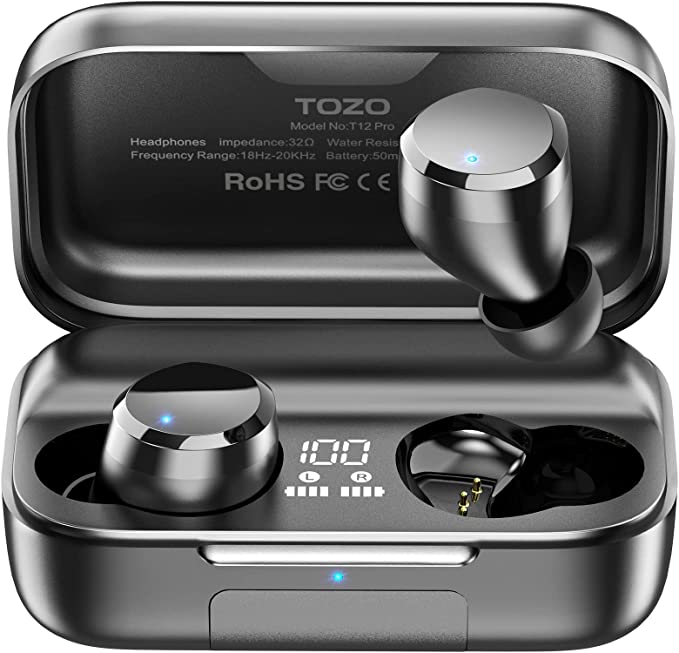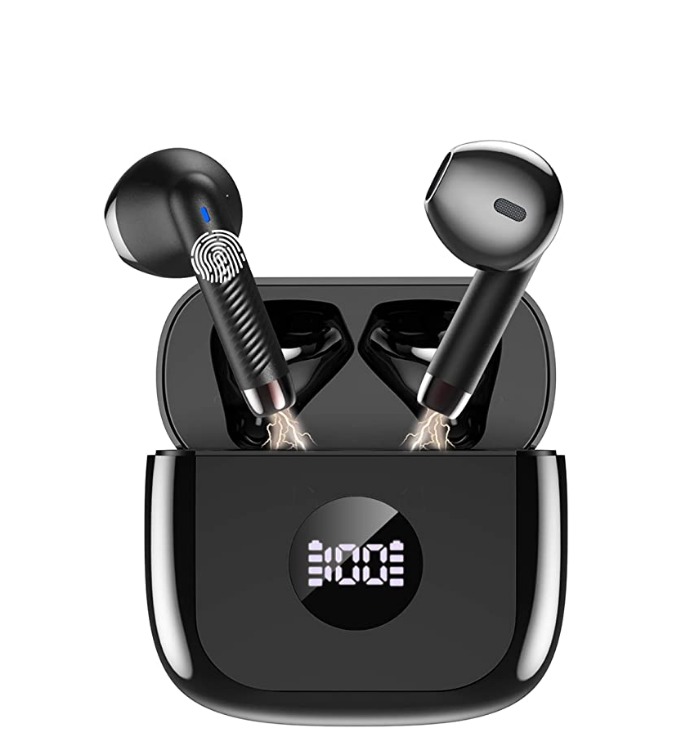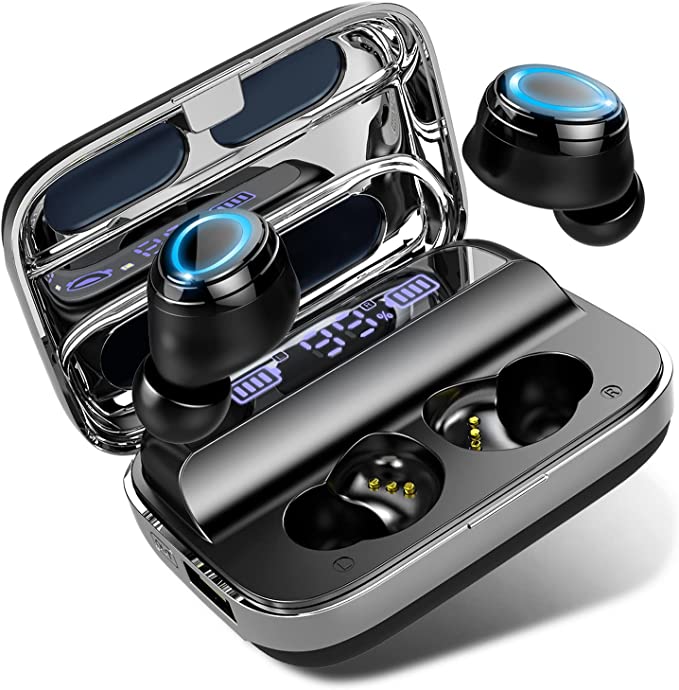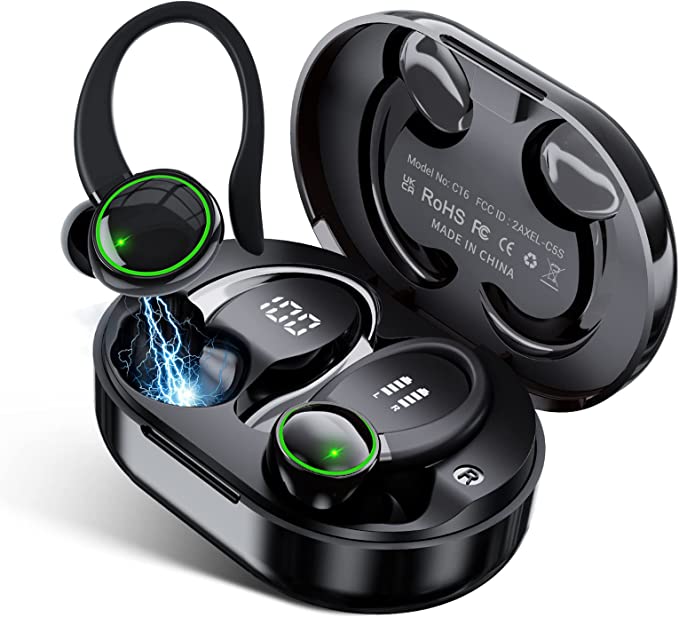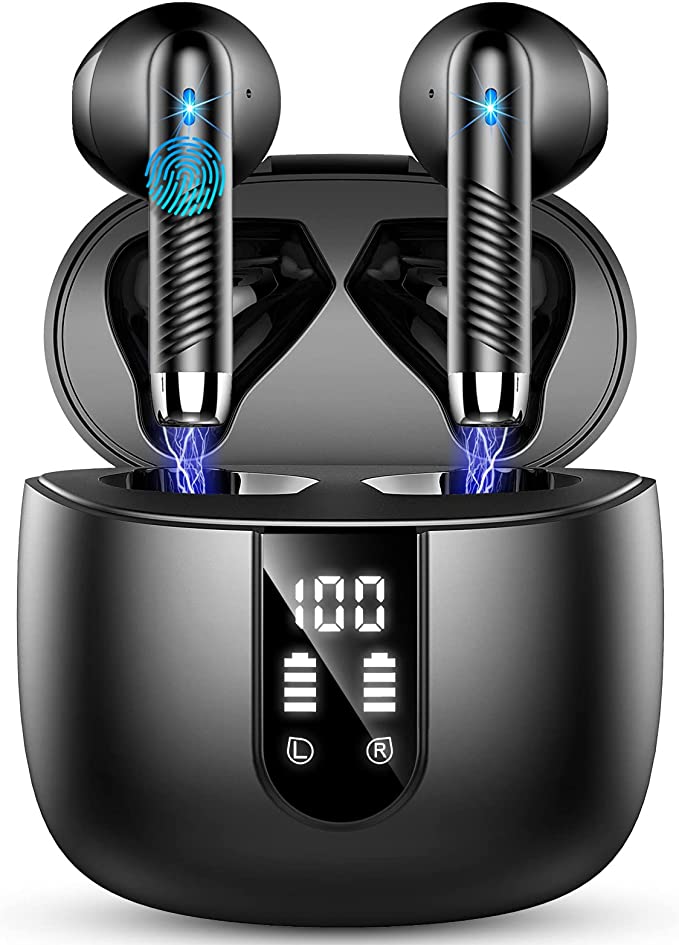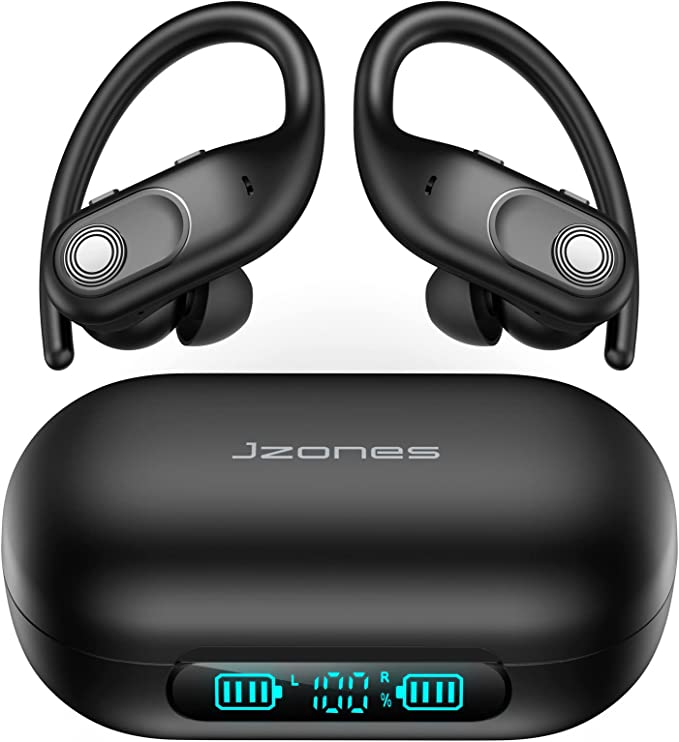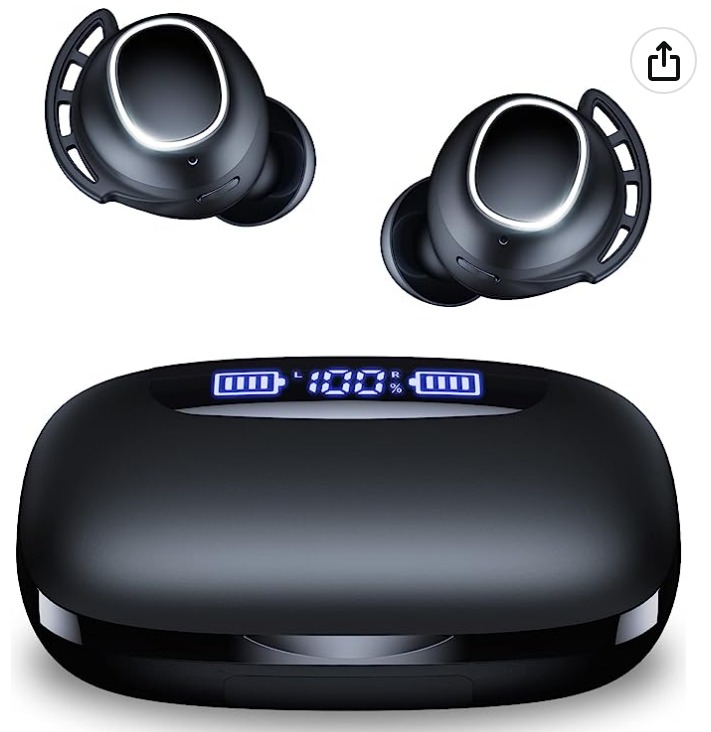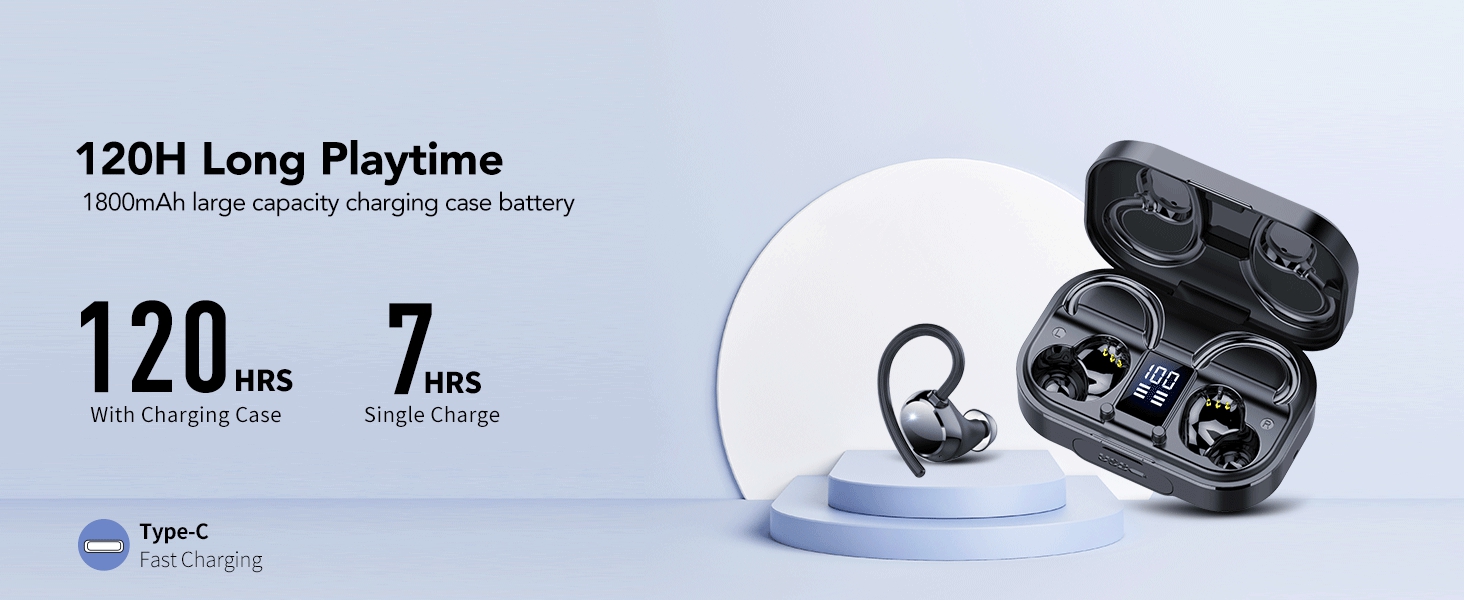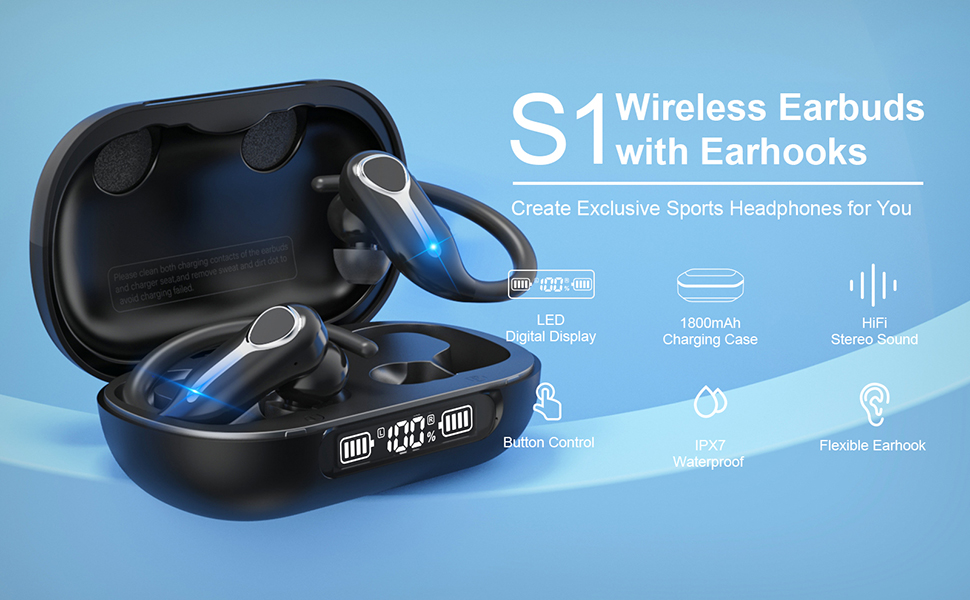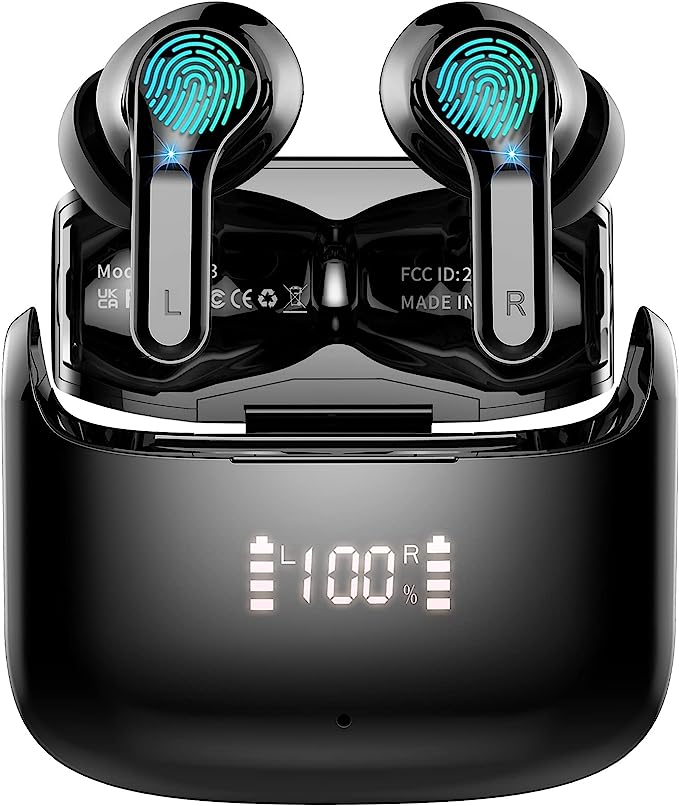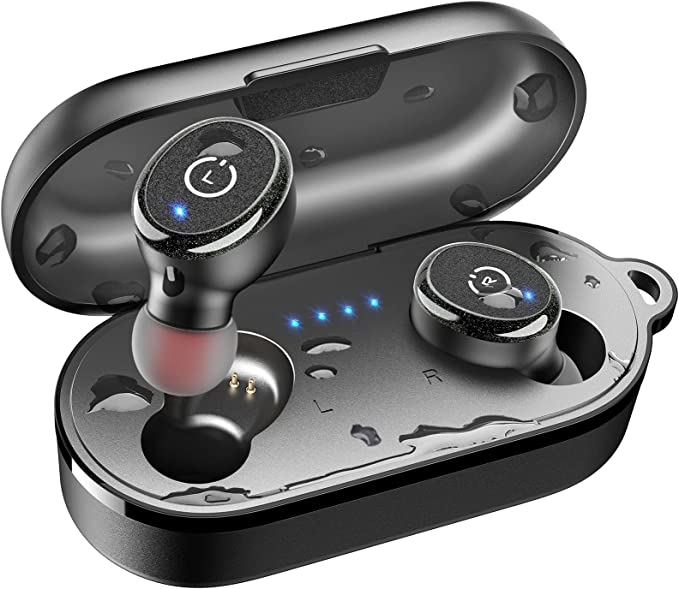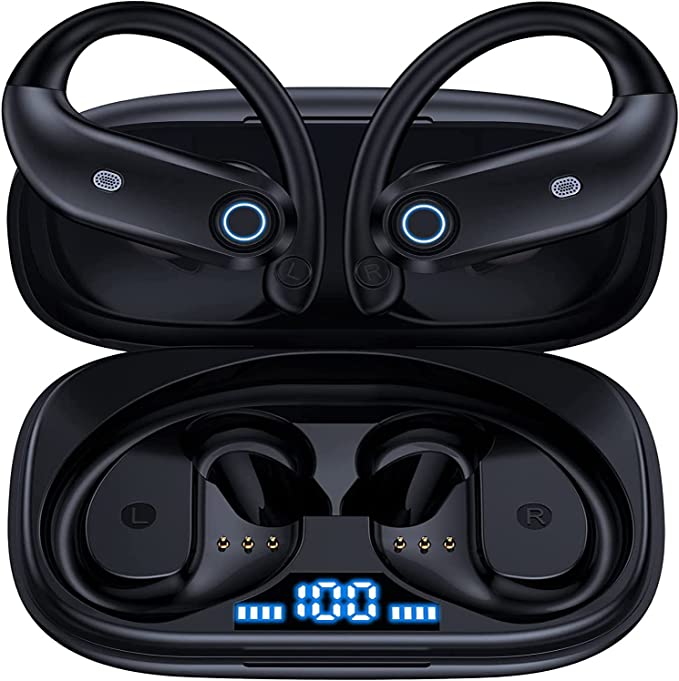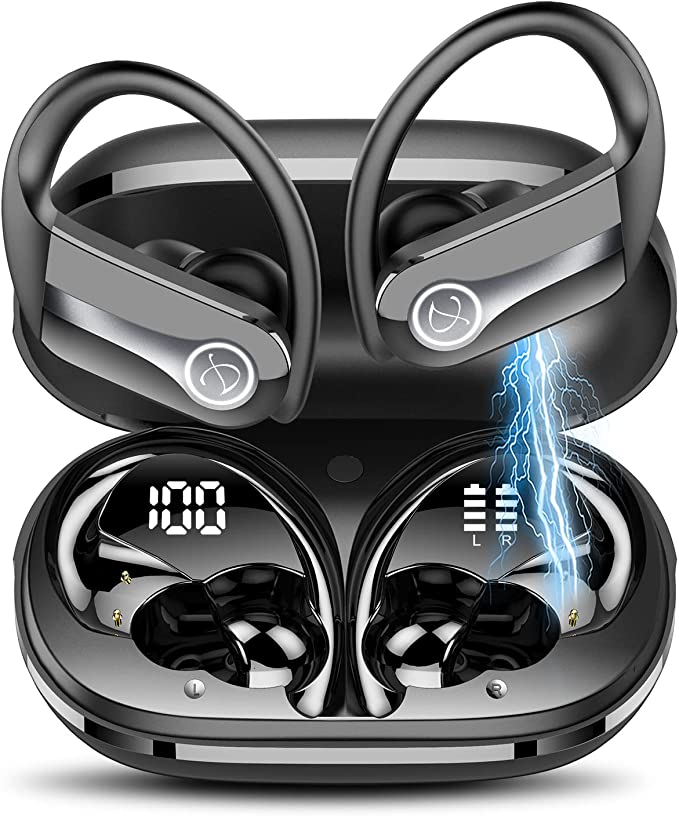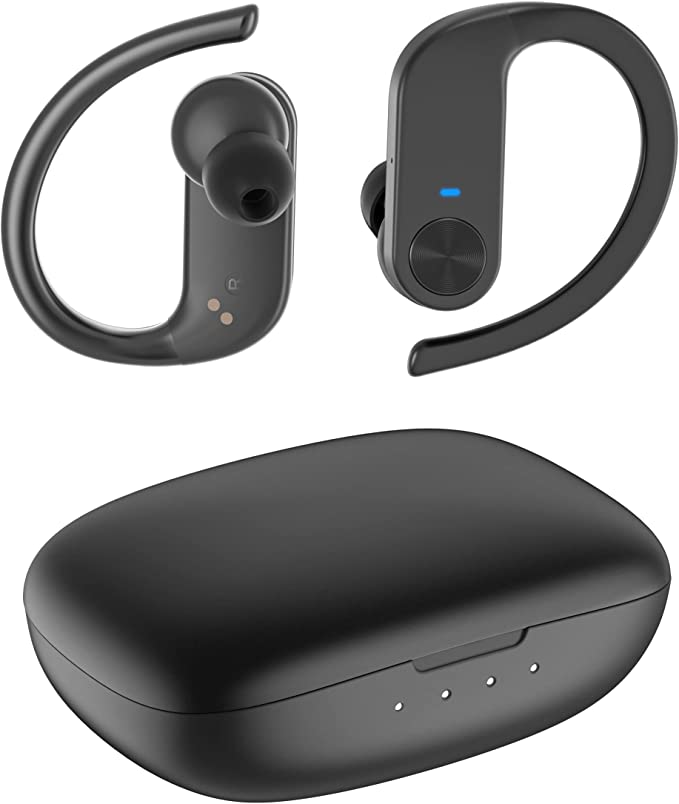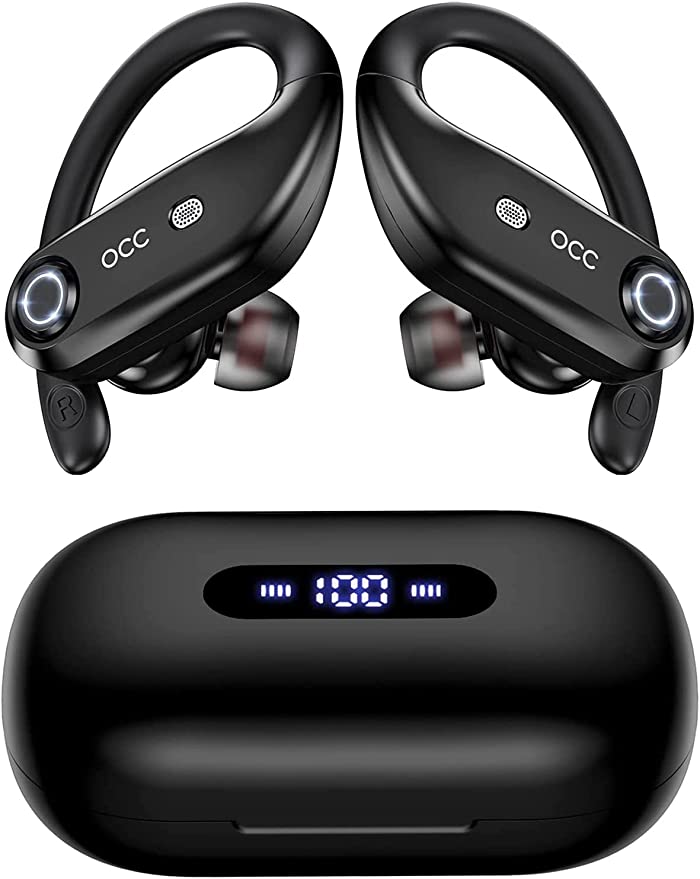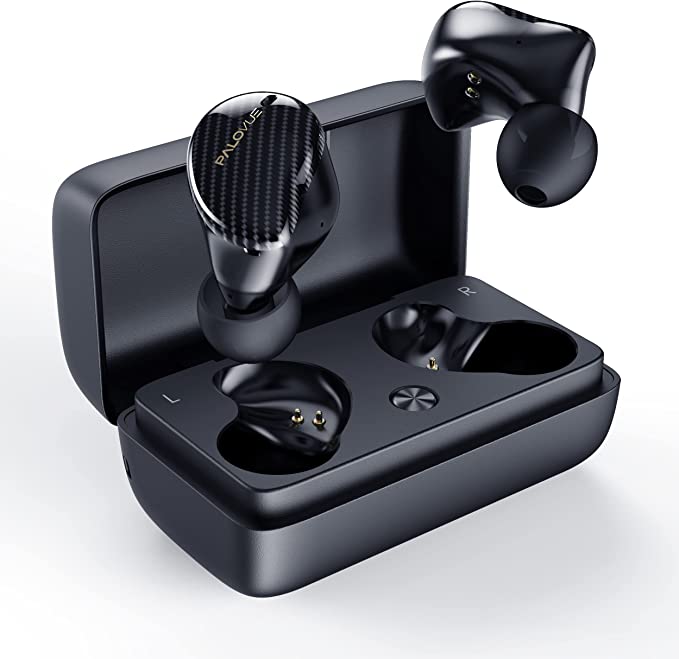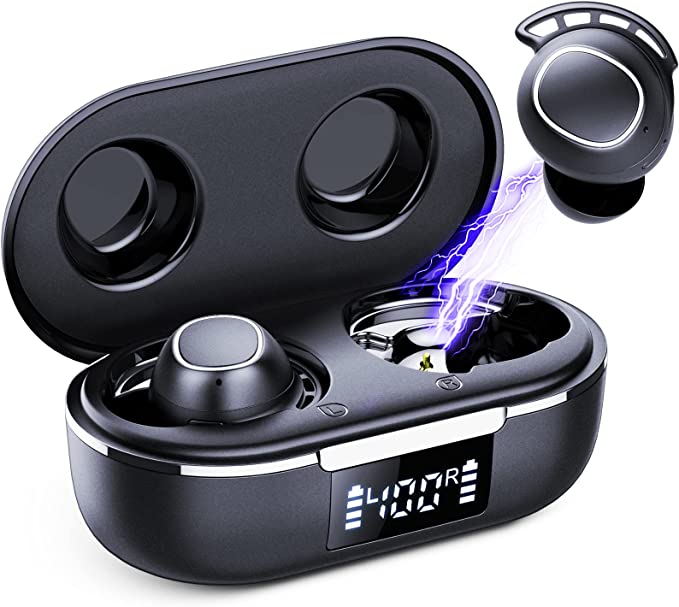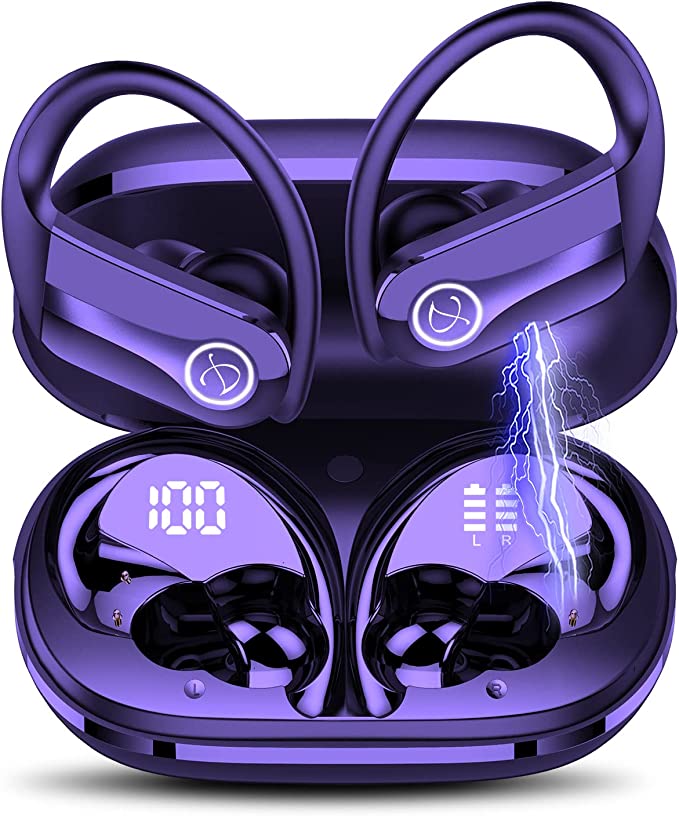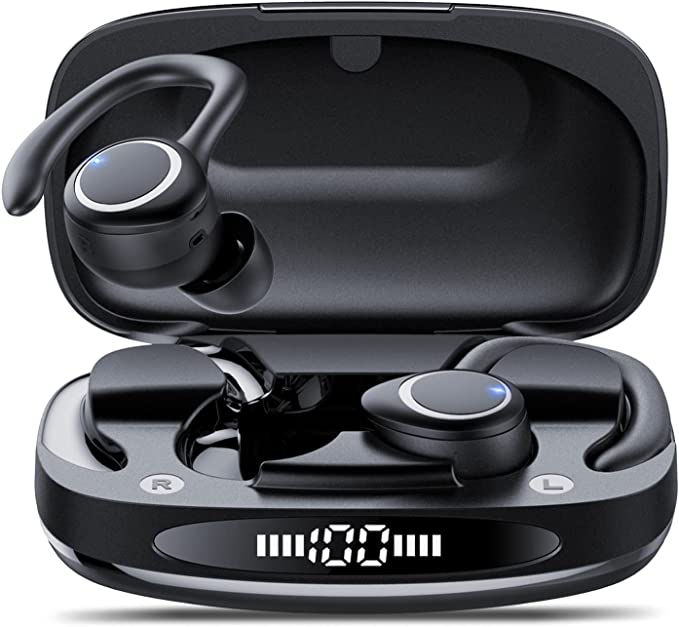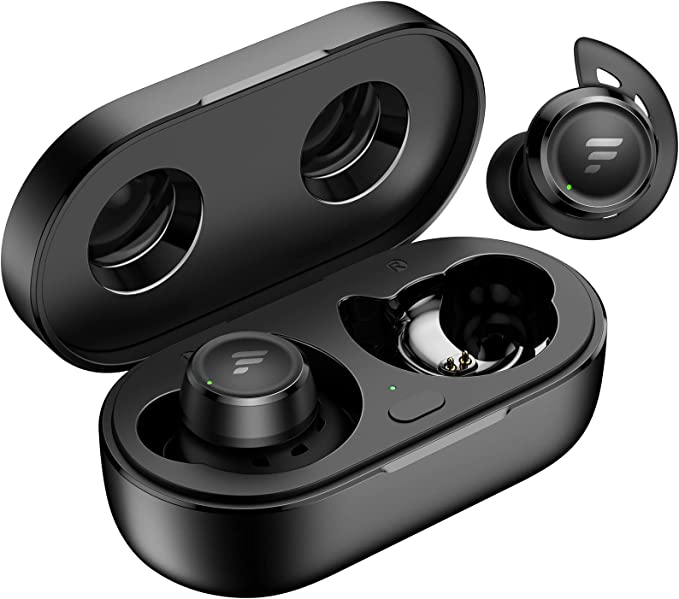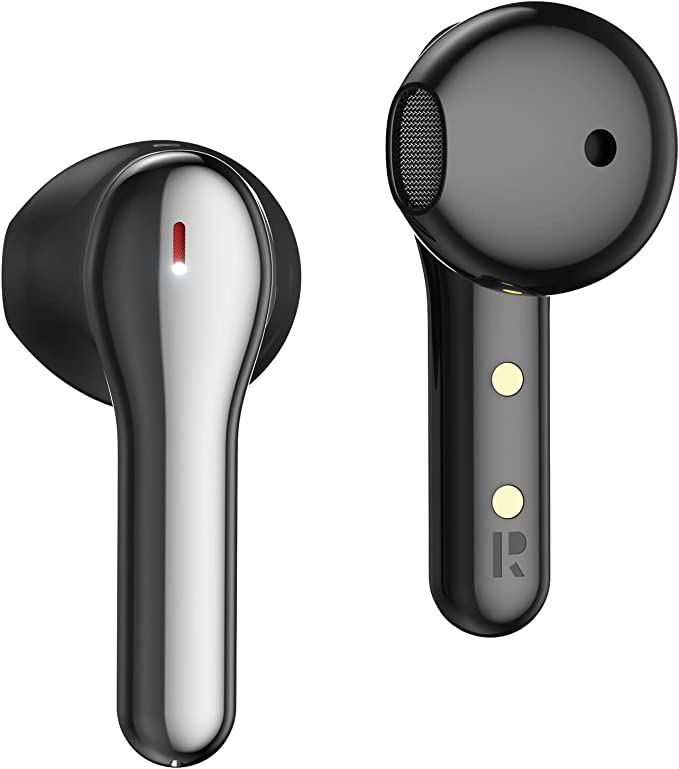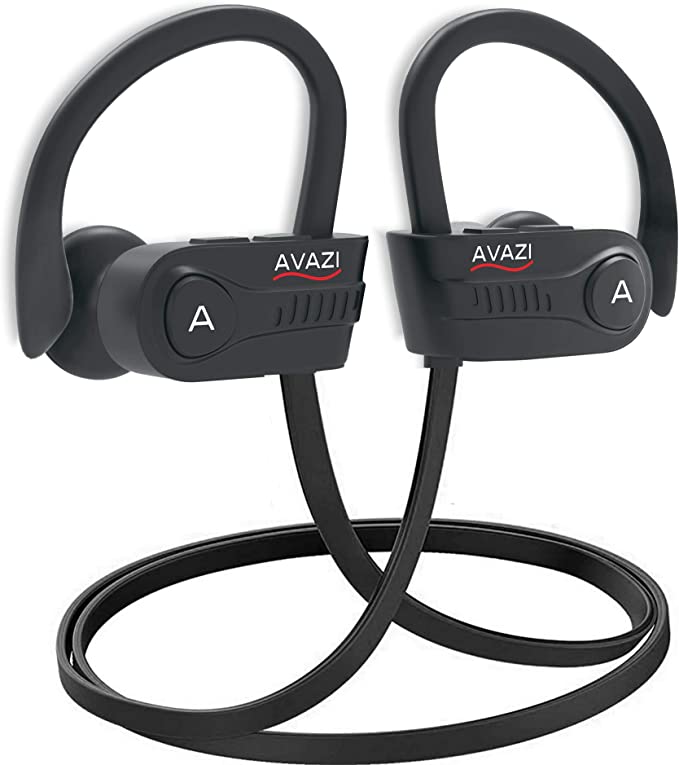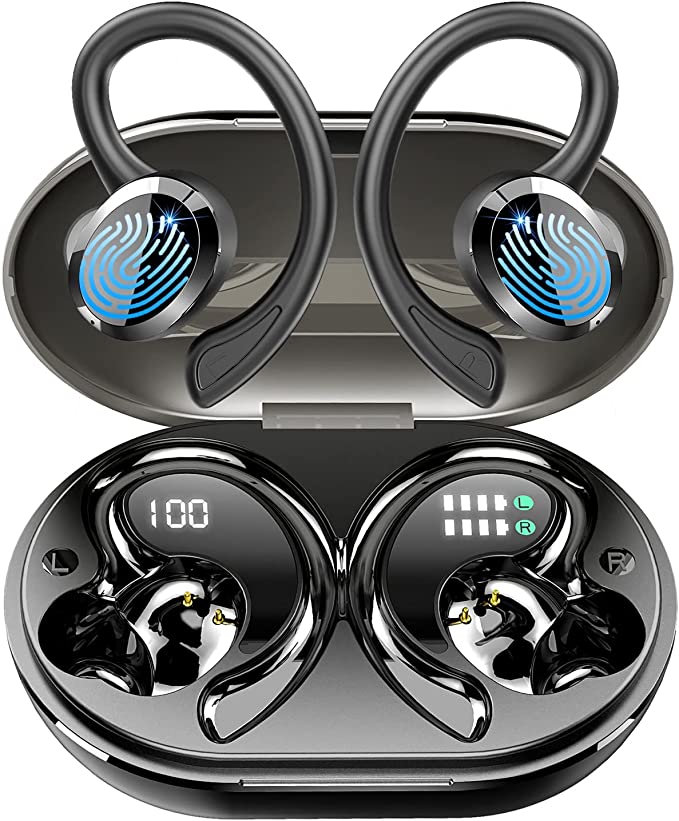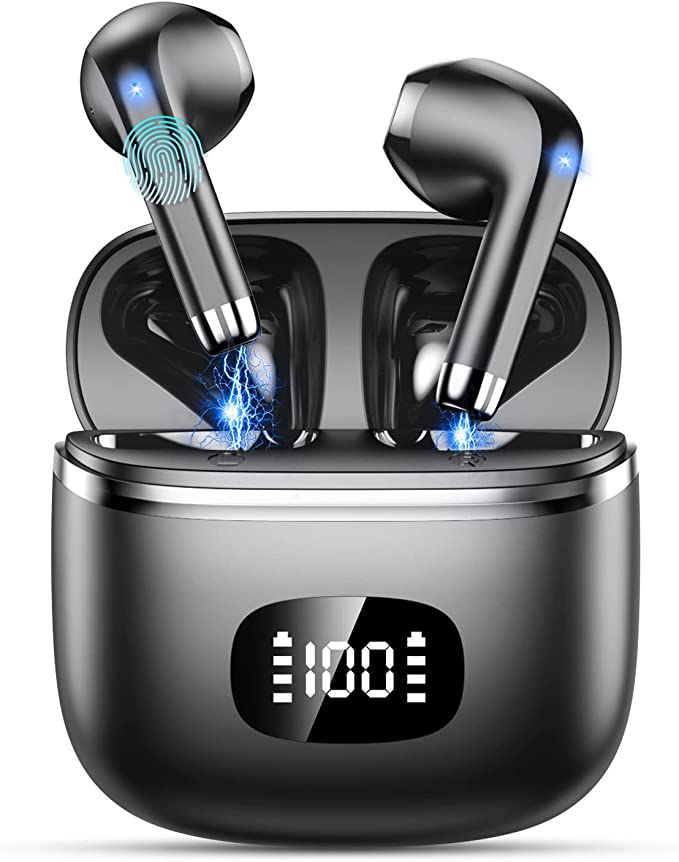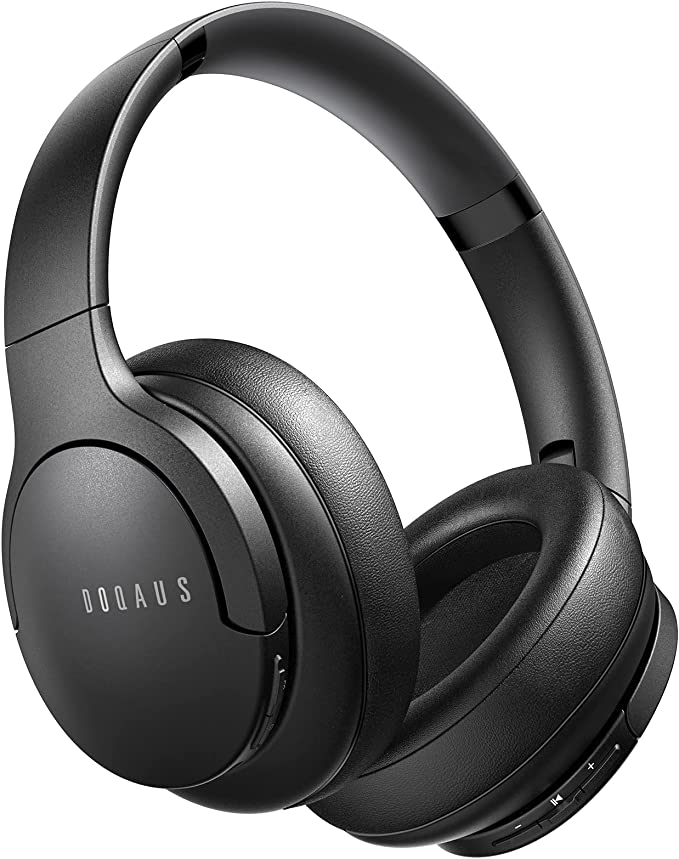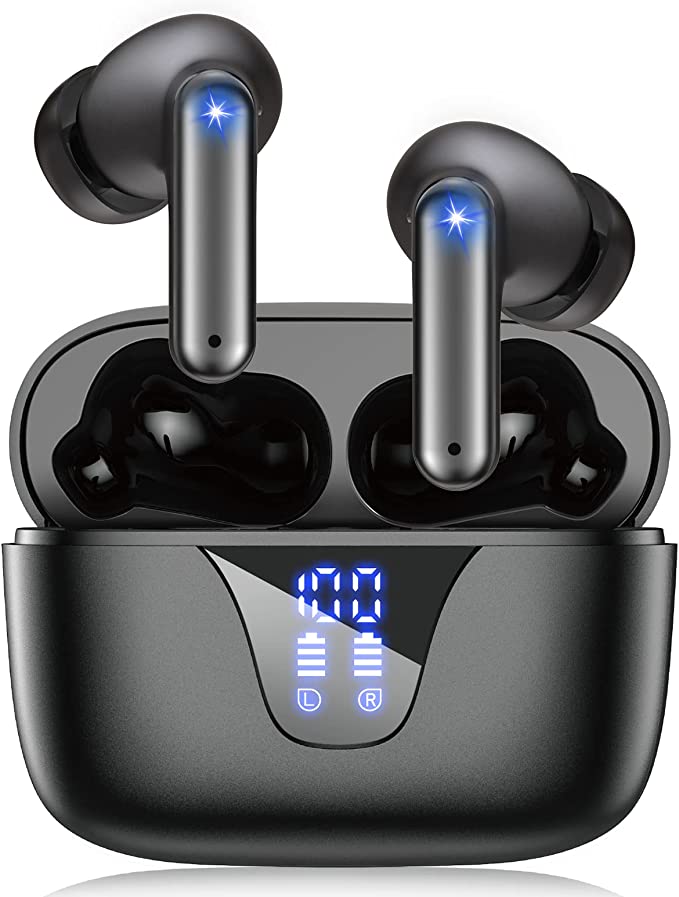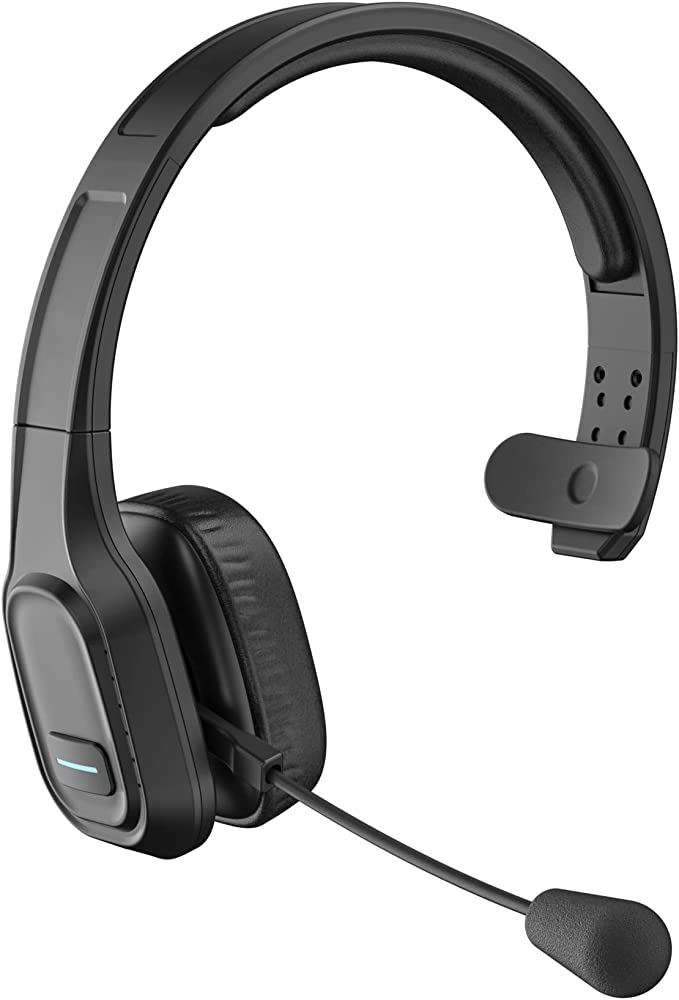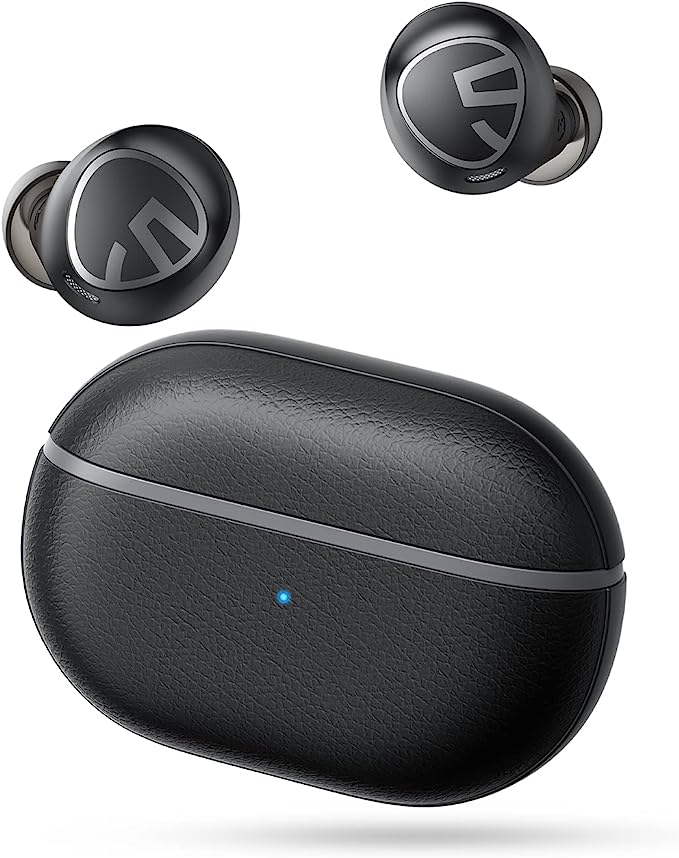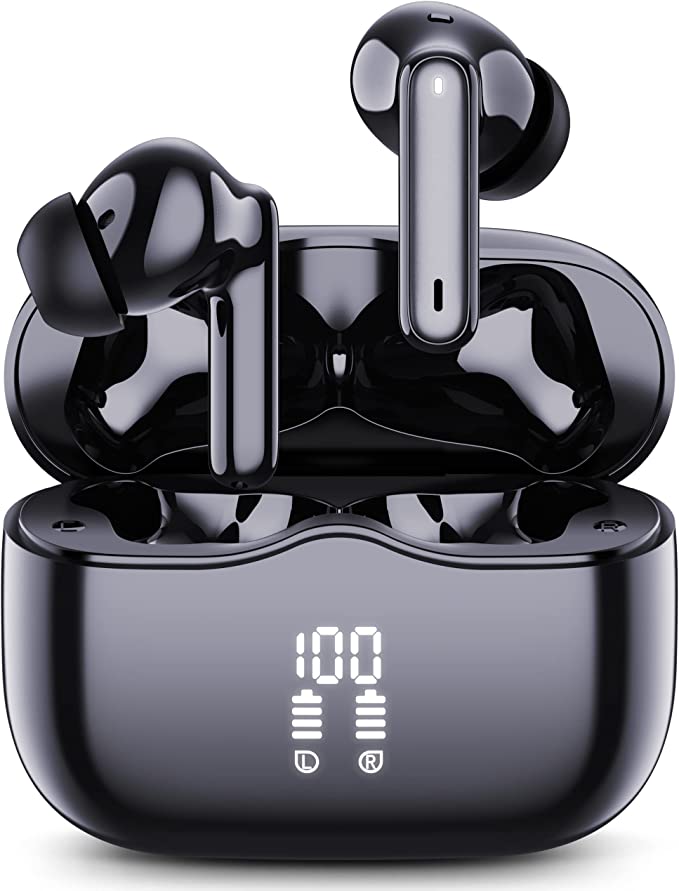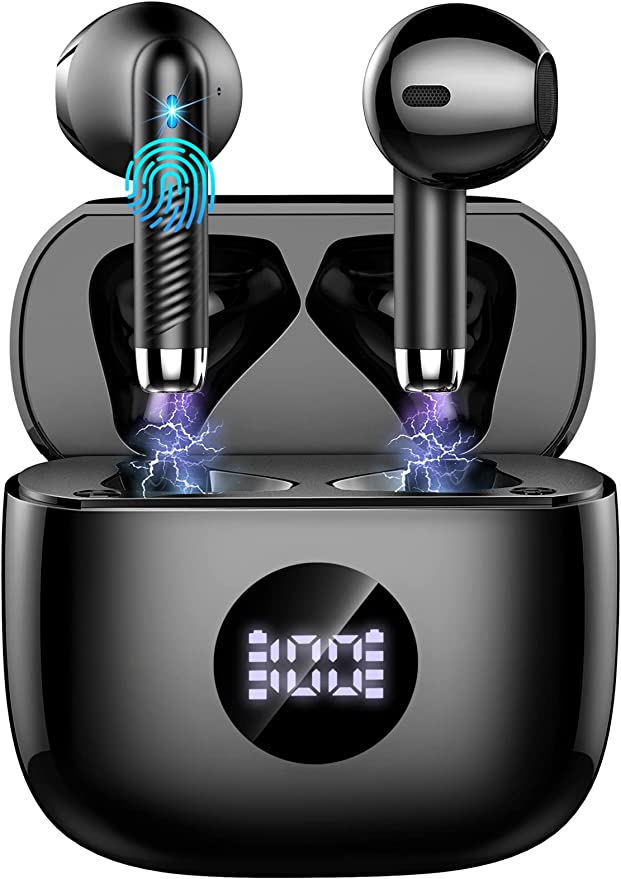Motast Q12 Wireless Earbuds: The Science of Seamless Sound, All-Day Power, and Rugged Reliability
Update on May 14, 2025, 1:20 p.m.
There’s a quiet revolution that’s been happening, quite literally, in our ears. We’ve journeyed from cumbersome, wire-tethered headphones to discreet, almost invisible conduits of personal soundscapes. It’s a marvel of modern engineering, this ability to carry rich symphonies, engaging podcasts, or crucial conversations within tiny shells nestled in our ears. Today, we’re going to peel back the layers of one such device – the Motast Q12 Wireless Earbuds. Think of this not as a review, but as a guided tour through a miniature museum of everyday science, where each feature tells a story of innovation. I’m Dr. Evelyn Reed, and I’ll be your companion on this exploration, aiming to illuminate the rather brilliant science that makes these everyday objects quite extraordinary.

The Invisible Dance: Mastering Connectivity with Bluetooth 5.0
Let’s start with that invisible tether: Bluetooth. It’s more than just a stylized “B” icon on our screens; it’s a sophisticated short-range wireless technology standard that uses UHF radio waves to transmit data between devices. Born in the late 1990s out of a desire to replace the myriad of cables connecting our gadgets, its name, quite poetically, harks back to Harald Bluetooth, a 10th-century Danish king famed for uniting disparate Danish tribes – just as Bluetooth technology aims to unite our electronic devices.
The Motast Q12 earbuds come equipped with Bluetooth 5.0. Now, version numbers in technology can often feel like arbitrary increments, but the jump to 5.0 (and its subsequent minor iterations like 5.1, 5.3 which the Q12 platform also has options for, though our focus here is the 5.0 detailed in its core features) brought tangible improvements over its predecessors like Bluetooth 4.x. We’re talking about potentially double the data transfer speed, up to four times the range (though this is highly dependent on an open environment and device power), and significantly better power efficiency. For you, the listener, this translates into that wonderfully seamless experience: quicker pairing with your phone, a more stable connection that’s less prone to those frustrating dropouts when you put your phone in your back pocket, and longer listening times before needing a recharge.
But it’s not just about a raw connection. Bluetooth operates using various “profiles,” which are like specialized languages or skill sets that enable different functions. The Q12 supports a crucial quartet:
- HSP (Headset Profile) and HFP (Hands-Free Profile): These are the workhorses for voice calls. Think of them as the protocols that allow your earbuds to act like a wireless telephone handset, managing call audio and basic controls like answering or ending a call.
- A2DP (Advanced Audio Distribution Profile): This is the star for music lovers. A2DP is responsible for streaming high-quality stereo audio from your device (phone, tablet, laptop) to your earbuds. Without A2DP, your music would sound flat and mono, like an old AM radio. It’s the reason you can enjoy rich, detailed sound wirelessly.
- AVRCP (Audio/Video Remote Control Profile): This gives you the power to control your media playback – play, pause, skip tracks, and sometimes even adjust volume – directly from your earbuds, without needing to fish out your phone.
The “one-step pairing” feature that Motast highlights is the user-friendly culmination of these underlying technologies. The first time you pair, your phone and earbuds perform a digital handshake, exchanging security keys and agreeing on communication protocols. Subsequently, the Q12 earbuds are designed to remember this trusted partner. So, when you take them out of their charging case, they immediately broadcast their availability, and your phone, recognizing a familiar friend, typically reconnects automatically. It’s a small convenience, but it’s built on layers of clever software and hardware integration, designed to make your entry into your audio world as frictionless as possible.

Crafting Your Personal Concert Hall: The Science and Soul of the Q12’s Audio
Now, let’s talk about what truly defines an earbud: the sound. The Motast Q12 boasts a 10mm large size speaker driver in each earbud, with the product description noting its drive area is “2.77 times than the normal drive area.” In the world of audio, the driver is the heart of the sound-producing system. It’s essentially a miniature loudspeaker, containing a diaphragm (a thin, flexible membrane), a voice coil (a coil of wire attached to the diaphragm), and a magnet. When an electrical audio signal passes through the voice coil, it creates a fluctuating magnetic field that interacts with the permanent magnet, causing the voice coil and the attached diaphragm to vibrate rapidly. These vibrations push and pull the air, creating sound waves that travel to your eardrum.
Why does a “large” 10mm driver matter, especially one with a comparatively larger surface area? Generally, a larger diaphragm can move more air. This increased air displacement is particularly beneficial for reproducing lower frequencies – the bass notes that give music its warmth and punch. It can also contribute to a fuller, more dynamic sound across the entire frequency spectrum. While “Hi-Fi” or “High-Fidelity” is a term that’s been around for decades and can be somewhat subjective, its core pursuit is sound reproduction that is faithful to the original recording, with minimal distortion and a balanced representation of all frequencies. The Q12 aims for a “truly natural, authentic sound and powerful bass performance with crystal crisp treble,” and a well-implemented 10mm driver is a good starting point for achieving such a profile.
But the driver doesn’t work in isolation. The Q12 employs a “half in-ear acoustic structure.” This refers to the physical design of the earbud casing and how it directs sound into your ear canal. Unlike fully sealed in-ear monitors that penetrate deeper, a half-in-ear design often aims for a balance between immersive sound and situational awareness, though the primary goal here is still good audio delivery. This structure, coupled with what Motast calls “high-definition rendering technology” (likely referring to the digital signal processing and audio codecs used), works in concert to shape the final sound signature you experience.
A critical component of perceived audio quality, especially in noisy environments, is noise isolation. The Q12 relies on passive noise isolation, achieved through its flexible silicone tips, offered in three sizes to help you find an “exceptional seal.” This is a purely physical barrier. Think of it like putting your hands over your ears, but far more precisely. A snug, airtight seal between the silicone tip and your ear canal does two things: first, it prevents your music from leaking out, and second, it significantly reduces the amount of ambient noise (the chatter in a café, the rumble of a train) from leaking in. This allows you to hear more of the detail in your music at lower volumes, which is also better for your long-term hearing health. It’s a different mechanism from Active Noise Cancellation (ANC), which uses microphones and circuitry to electronically generate “anti-noise” to cancel out external sounds. Passive isolation, when done well with a good seal, can be remarkably effective, especially for higher-frequency noises.

Engineered for the Everyday Athlete (And the Occasional Downpour): Durability Meets Comfort
An earbud isn’t just an audio device; it’s something you wear, often for extended periods and during various activities. This is where ergonomics and durability become paramount. The Motast Q12 features an ergonomic half-in-ear design and an impressively ultra-light weight of only 4 grams per earphone. That’s about the weight of a single sheet of A4 paper, or less than a U.S. nickel coin. Why is this scant weight so crucial? The human ear, particularly the outer part (the pinna) and the ear canal, is sensitive. Heavier earbuds can cause discomfort, pressure points, and fatigue over time, making you want to take them out. A 4-gram design aims to achieve that “barely there” feeling, crucial for long commutes, extended work sessions, or, importantly, during workouts where any added encumbrance is unwelcome. The “half-in-ear” shape itself is engineered to sit securely within the concha of the ear, using its natural curves for stability, hopefully preventing them from dislodging during a run or vigorous exercise.
Then there’s the matter of surviving life’s little (and sometimes big) splashes. The Q12s are rated IP7 waterproof. Let’s decode that. “IP” stands for Ingress Protection. The first digit (if it were present, e.g., IP67) would rate protection against solids like dust. The second digit, in this case, ‘7’, rates protection against liquids. An IPX7 rating specifically means the device can withstand submersion in water up to 1 meter (about 3.3 feet) for up to 30 minutes. This doesn’t mean you should go swimming with them, as water pressure from movement can exceed static submersion limits, and the Bluetooth signal doesn’t travel well underwater. However, it provides excellent peace of mind against heavy sweat during an intense workout, an unexpected downpour on your run, or even an accidental drop into a puddle.
Motast also mentions an “inner Nano-coating” for both the earbuds and the charging case. This is a fascinating piece of material science. Nano-coatings are microscopically thin layers applied to surfaces to imbue them with specific properties. In this context, it’s likely a hydrophobic (water-repelling) coating. Imagine a surface so smooth and with such low surface energy at a microscopic level that water beads up and rolls off, much like on a lotus leaf, rather than wetting and penetrating the material. This coating acts as an additional line of defense, protecting the sensitive internal electronics from moisture damage even if some liquid gets past the outer seals. For anyone living an active lifestyle, particularly in regions with unpredictable weather, this level of water resistance is a highly practical feature.

The Unseen Engine: Powering Your Soundtrack Through the Day (And Beyond)
All this wonderful technology needs power, and in the world of portable electronics, battery life is king. The Motast Q12 earbuds themselves are stated to offer over 6 hours of playtime from a single charge. This is a respectable duration, enough to cover most commutes, workouts, or several hours of focused work. But the magic extends with the mini charging case, which boosts the total playtime to an impressive 30 hours before the case itself needs recharging. This means you could potentially go for several days, or even a week, of typical usage without needing to find a wall outlet.
The workhorses behind this endurance are Lithium Polymer (Li-Po) batteries. These are a type of rechargeable battery that has become ubiquitous in portable devices due to their high energy density (meaning they can store a lot of energy in a small, light package), their ability to be made in various thin and flexible shapes, and their relatively slow self-discharge rate when not in use. The Q12 likely uses tiny Li-Po cells within each earbud and a larger one within the case.
The charging case is more than just a battery pack; it’s designed for convenience. Described as being “as big as a car key,” its portability is a key selling point. It features LED lighting to indicate its own battery life, so you’re not caught guessing how much reserve power you have. Furthermore, it uses magnetic attraction for earbud placement. This is a small but thoughtful touch – the magnets guide the earbuds into their charging slots correctly and hold them securely, ensuring they make proper contact with the charging pins. The case itself, made from “premium plastic” and aiming for a “fashion” look, recharges in about 1 hour via a modern Type-C USB port, which is quickly becoming the standard for its reversibility and faster power delivery capabilities.
A Gentle Command: The Intuitive World of Touch Controls
Interacting with our devices should be intuitive, and increasingly, that means moving beyond physical buttons. The Motast Q12 earbuds feature touch control sensors. Instead of a traditional button that you need to physically press (which can often uncomfortably push the earbud further into your ear or dislodge it), touch controls typically rely on capacitive sensing. Your body is electrically conductive. When your fingertip touches the designated sensor area on the earbud, it changes the local electrostatic field, or capacitance, at that point. The earbud’s internal microcontroller detects this change and interprets it as a command.
This allows for a range of functions – switching songs, answering or rejecting calls, or activating your phone’s voice assistant (like Siri or Google Assistant) – all with a simple tap, double-tap, or long press on the earbud’s surface. The primary benefit, as Motast points out, is that it “can largely minimize the pressure to your ears.” It’s a more elegant and often more comfortable way to control your audio experience on the go.

When Technology Meets Humanity: Reflections and Considerations
It’s fascinating to see how these diverse technologies converge in a product like the Motast Q12. While the specifications paint a picture of capability, the true test is always the human experience. User feedback, like that from Heather who found they “stay in well and connect to my phone nicely,” and noted “Battery power has been good so far,” corroborates the benefits we’d expect from good ergonomic design, stable Bluetooth 5.0, and efficient power management. Conner Fox Chilton’s appreciation for the “nice sound quality” and the “LED battery display” also highlights how well-implemented core features resonate with users.
Of course, no single design is perfect for everyone. Heather also mentioned a personal preference regarding how they feel “in my ears after a while,” underscoring the subjective nature of comfort, which even the most advanced ergonomics can’t universally guarantee due to the vast diversity in human ear shapes. Conner Fox Chilton’s observation about “some sharp edges where both pieces connect” is a valuable reminder that beyond the core science, the final execution of industrial design and manufacturing precision plays a crucial role in the tactile experience of a product. Such points aren’t necessarily indictments of the core technology, but rather reflections on the intricate process of bringing that technology to life in a physical form that aims for both functionality and user delight.
Conclusion: The Symphony of Science in Your Ears
The Motast Q12 wireless earbuds, like so many of the seemingly simple gadgets that populate our lives, are a testament to a symphony of scientific disciplines working in concert. From the radio frequency engineering of Bluetooth that grants us wireless freedom, to the acoustic principles that shape the sound waves gracing our eardrums; from the material science delivering robust waterproofing and featherlight comfort, to the electrochemical innovations powering days of listening – it’s a remarkable feat of miniaturization and integration.
By understanding a little more of the “how” and “why” behind these features, we move beyond being passive consumers to become more appreciative and informed users. The Motast Q12, in this light, serves as an accessible window into the brilliant, everyday science that is constantly working to enhance our connection to our world and to our favorite soundtracks. The journey of personal audio is ever-evolving, and it’s an exciting soundscape to be a part of, filled with the promise of even more ingenious ways to experience the audio that moves us.
